Liina Reisberg
Head of the Legal Information and Judicial Training Department of the Supreme Court
Signe Rätsep
Chief Specialist of the Legal Information and Judicial Training Department of the Supreme Court
The statistical data[1] characterising the work of the Supreme Court include the number of requests for proceedings submitted to the Supreme Court and matters reviewed by three types of court proceedings – civil, administrative court and offence proceedings. In constitutional review proceedings, data are gathered regarding the number of matters reviewed. Requests for proceedings are considered to include appeals in cassation, appeals against court rulings, applications for review and applications for procedural aid, including applications for state legal aid. Statistics on matters reviewed are kept according to the matters.[2]
Review of requests for proceedings
According to law, the Supreme Court has the right to decide whether to open proceedings with regard to a request in order to ensure the legitimacy of the judgments of courts of lower instance, harmonise case law or develop procedural law.
The number of requests for proceedings received has increased by 10% compared to the previous year, while the number of requests reviewed has remained the same. The proceeding time for matters in preliminary proceedings has been shortened.
In 2024, 12% of all requests for which the Supreme Court decided on acceptance or rejection were accepted (241 out of 2064 requests). By comparison, 13% of requests were accepted in 2019 and 2020, 12% in 2021 and 2022 and 10% in 2023.
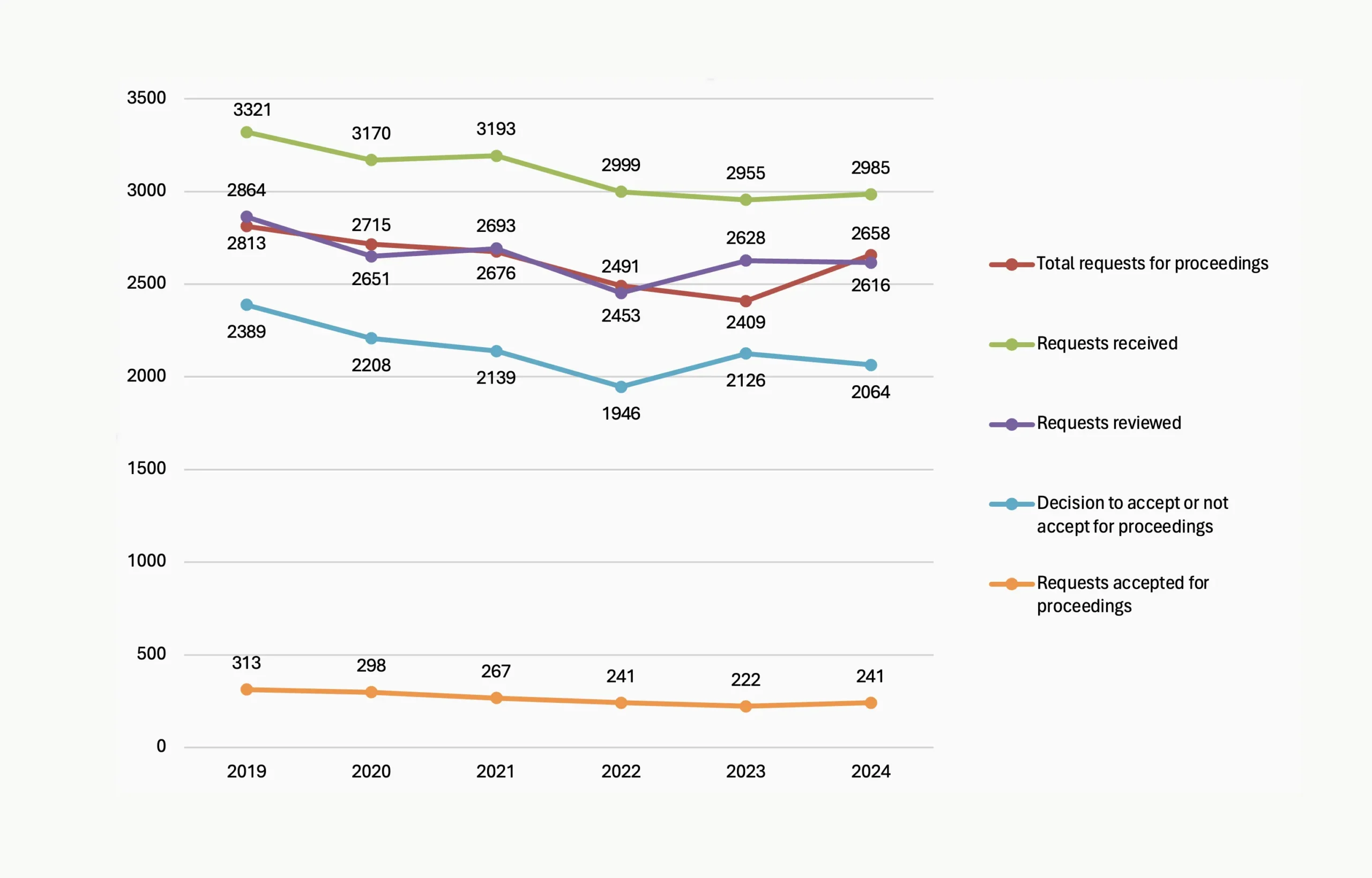

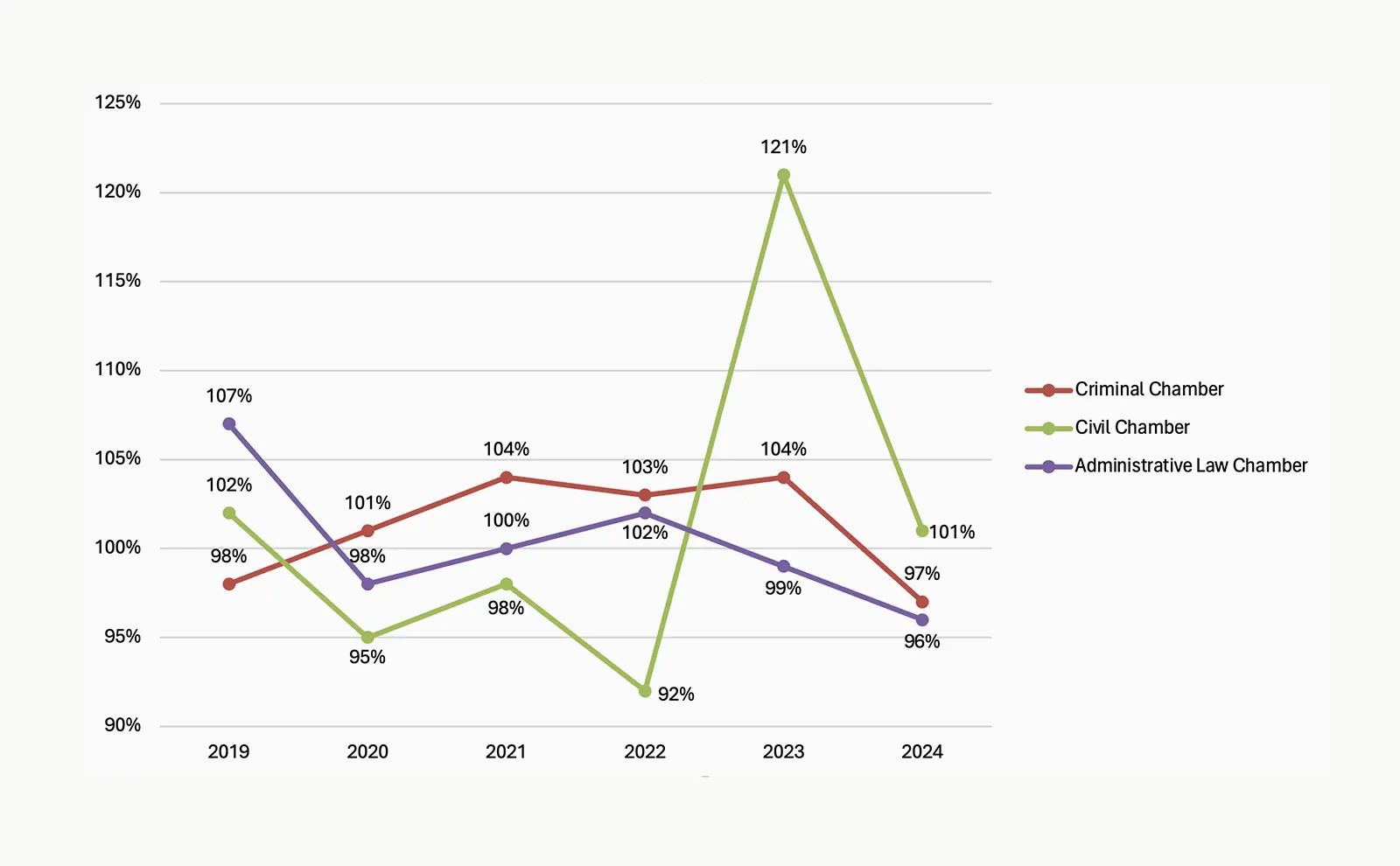
Villu Kõve, Chief Justice of the Supreme Court:
It is not certain that the number of requests for proceedings received will continue to decrease, as we saw in 2019–2023. The number of administrative matters has increased dramatically. The economic downturn will likely lead to an increase in court cases in both civil and offence matters, but will also result in more tax disputes, for example. Unfortunately, the pace of work has not increased – despite the decrease in the number of cases. Things have certainly become more complicated, as the role of voluminous European Union law has grown.
Saale Laos, Chair of the Criminal Chamber of the Supreme Court:
Criminologically, it is plausible that an economic recession has an effect on crime, for example, thefts increase, but also acts of violence as an expression of frustration and stress. The Ministry of Justice and Digital Affairs confirms that registered crime has increased for the second year in a row.[5] However, this may not be reflected in the number of criminal and misdemeanour matters reaching the Supreme Court. There may be several reasons for this: 1) the delay involved in going through the first two instances of court; 2) the use of alternative procedural solutions instead of sending the criminal and misdemeanour matter to court.
The Yearbook of the Prosecutor’s Office 2023 shows that the number of proceedings terminated in the Prosecutor’s Office has consistently increased from 2019–2023, as has their share in the total number of procedural decisions. The share of referrals to court in all procedural decisions continues to decrease – in 2017, court referrals accounted for 71% of all procedural decisions, while in 2023, referrals of criminal files or indictments to court accounted for 47% of procedural decisions.[6]
In the Civil Chamber, a total of 1071 requests for proceedings were pending (1283 in 2023), of which 916 were submitted in 2024. The number of requests received has decreased by 2% compared to the previous year. The Chamber reviewed 928 requests (1128 in 2023), which is 18% fewer than last year. A decision on acceptance or rejection of the request was made in the case of 795 requests (998 in 2023), of which 100 (107 in 2023) were accepted.

Kaupo Paal, Chairman of the Civil Chamber of the Supreme Court:
The number of received civil matters is relatively stable. The number of matters received is significantly affected by how many matters are adjudicated on by the courts of first and second instance. At the same time, there are several areas where the Supreme Court must significantly contribute to shaping case law and creating clarity in the legal order, which could result in harmonising case law and reducing the number of appeals.
In the Administrative Law Chamber, 984 requests for proceedings were pending in 2024 (708 in 2023), of which 868 requests for proceedings were submitted in 2024. The number of requests received has increased by 45% compared to the previous year. The Administrative Law Chamber reviewed 837 requests (592 in 2023), which is 41% more than last year. A decision on acceptance or rejection of the request was made in the case of 751 requests (564 in 2023), of which 56 (47 in 2023) were accepted.
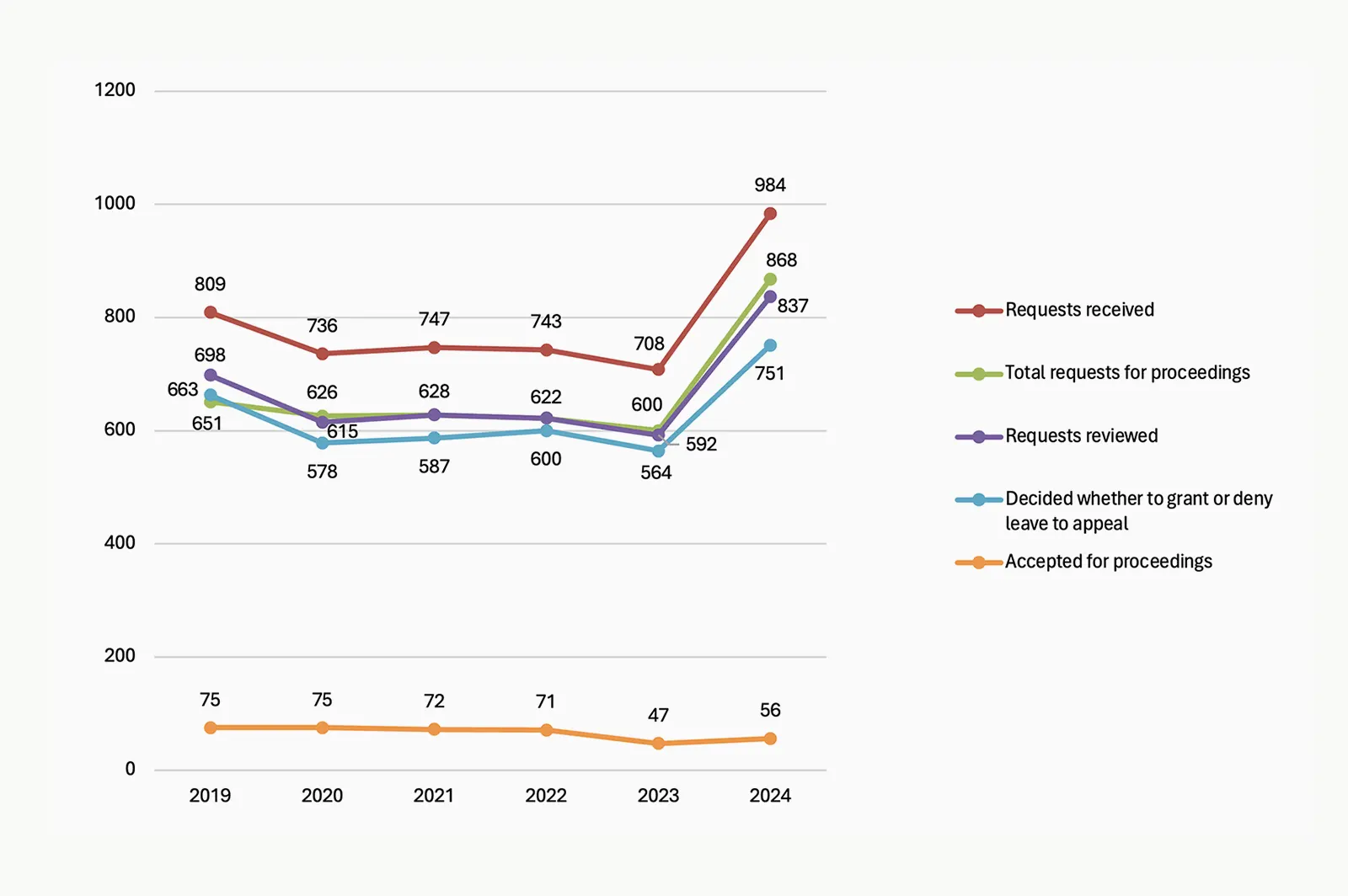
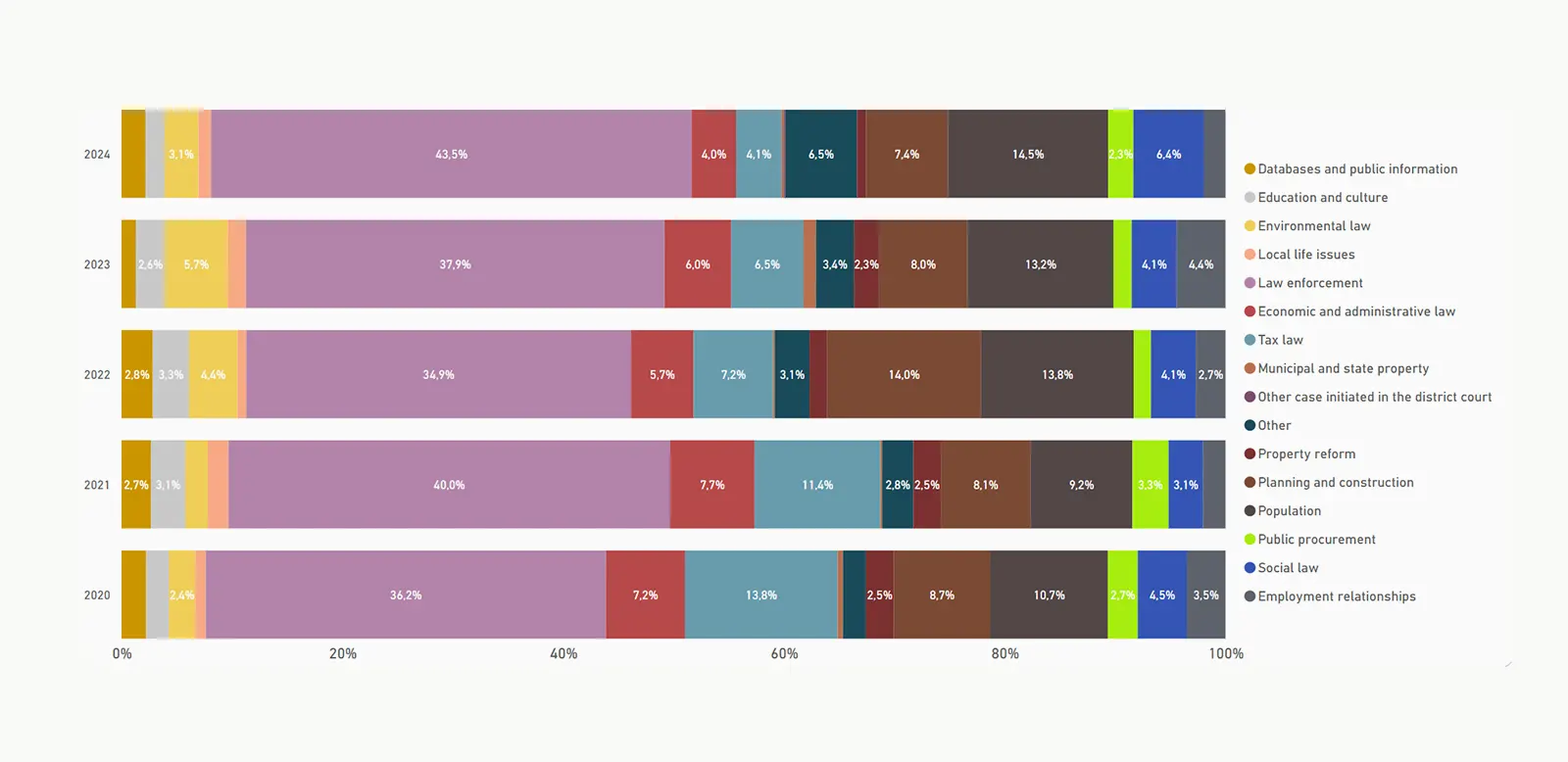
Law enforcement disputes account for the largest share of the requests for proceedings received, 43.5%. The increase in their share compared to the previous year is significant: 5.6%. The number of administrative cases, the type of which is indicated in the first instance as “population”, increased by a percentage point (2023: 13.2%; 2024: 14.5%) and there were 2% more social law matters (2023: 4.1%; 2024: 6.4%).
Ivo Pilving, Chairman of the Administrative Law Chamber of the Supreme Court:
In my conversations with chairmen of courts, I have understood that there is an increase in all types of cases in general. Prisoners who recently gained electronic access to court proceedings certainly had an effect on the statistics as well. Filing a complaint on a tablet is much easier than doing it on paper – just type it out and press “send” instead of having to get a sheet of paper, a pen, an envelope, and then write it by hand.
The economic situation definitely plays a role here, affecting various areas, such as social benefits and taxation. International developments (especially those related to Russia and Ukraine) that have led to the movement of foreigners also have an impact. True, by 2024, the larger wave caused by the war in Ukraine in its current state, as well as influences from Latvia, Lithuania and Poland (Belarusian forced migration), should be over (it mainly took place at the end of 2022 and in 2023).
In 2024, the workload of the Administrative Law Chamber of the Supreme Court could have been affected by the increase in cases (concerning taxes, foreigners, etc.) in the first and second instance in 2023.
In population matters, there is also an important nuance that in almost all cases of asylum and detention, there is a state legal aid lawyer provided who appeals regardless of whether there is a prospect for it or not – this is part of their duties.
The Criminal Chamber had 926 requests in 2024 (964 in 2023), of which 870 requests were submitted in 2024. The number of requests received has decreased by 1%. The chamber reviewed 848 requests (908 in 2023), which is 6% less than last year. A decision on acceptance or rejection of the request was made in the case of 518 requests (564 in 2023). Of these, 85 (68 in 2023) requests were accepted.
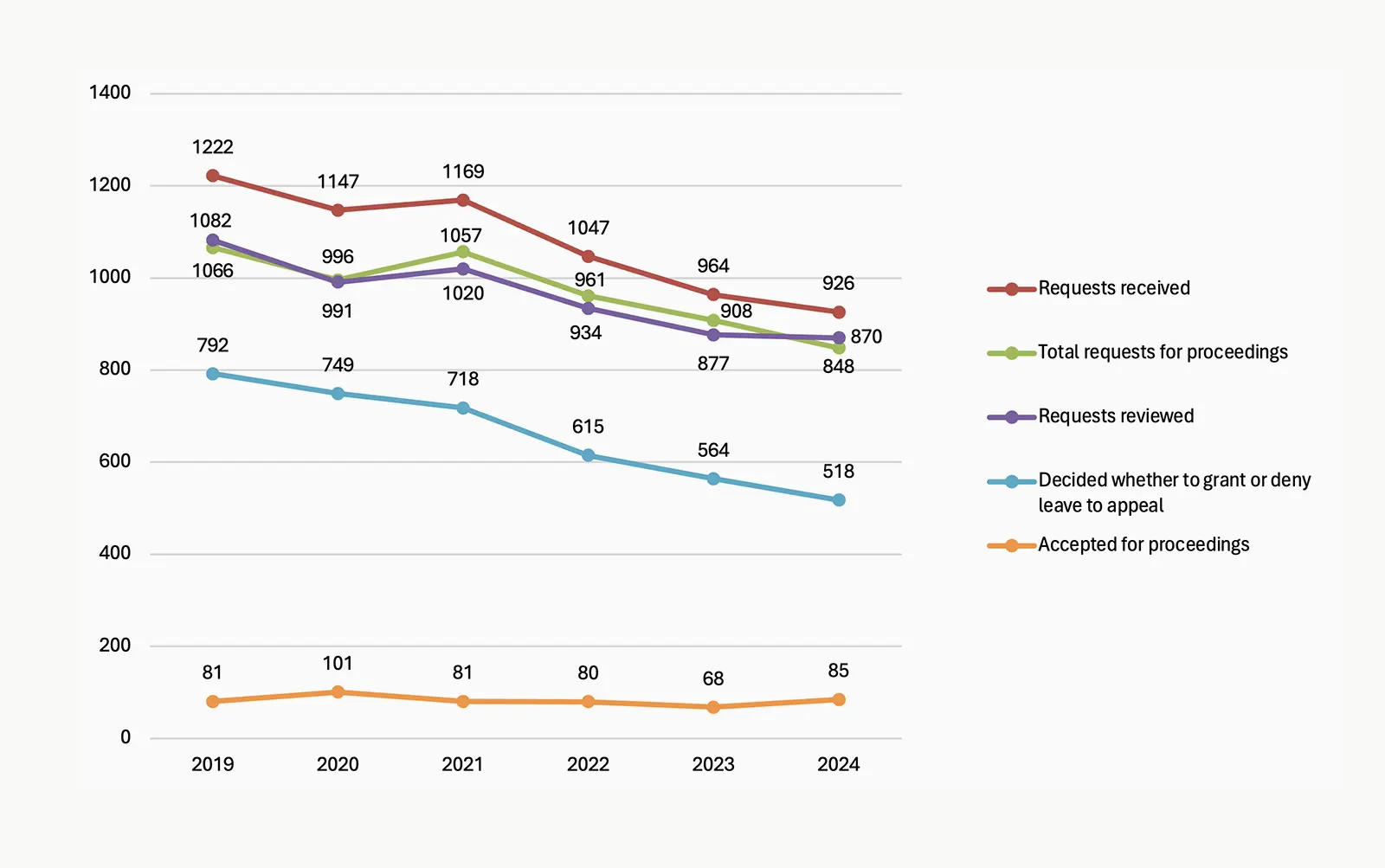
Looking at the longer time frame (2019–2024), there is an apparent downward trend in requests for proceedings: the highest number of requests was received in 2019 (1066), the lowest in 2024 (848).
Saale Laos, Chair of the Criminal Chamber of the Supreme Court:
When the number of cases filed in the circuit court decreases, it is logical that the same trend is also reflected in the number of cases filed in the Supreme Court. For example, in 2024, the number of criminal and misdemeanour matters received by circuit courts decreased by 15% compared to the previous year, while the share of complaints in criminal proceedings in the Supreme Court decreased by 10%. According to the Ministry of Justice and Digital Affairs, in recent years, approximately 10% of county court decisions have been appealed to the circuit court. In misdemeanour cases, appeals to the Supreme Court are mostly filed against county court decisions due to the so-called “jumping cassation”. Statistics show that the number of misdemeanour cases in county courts is also declining.
Results of the review of court matters in Supreme Court chambers
Constitutional review procedure
In 2024, 27 cases were reviewed in the constitutional review procedure. On two occasions, the Supreme Court en banc ruled on a constitutional review matter. In both 2023 and 2024, the largest proportion of matters were election complaints, as the Riigikogu was elected in 2023 and the European Parliament a year later. In 2023, 21 election complaints were received (51% of constitutional review cases) and in 2024, 15 election complaints (44%) were received. In second place is the initiation of constitutional review based on a court decision: this was done 11 times in 2023 and 7 times in 2024.
Villu Kõve, Chief Justice of the Supreme Court and Chairman of the Constitutional Review Chamber:
Legal awareness in society is increasing. Therefore, there are also more complaints and new topics. However, complainants are recurring, especially in the case of election complaints, where only a couple of people account for a large portion of the complaint burden.
Different conclusions can be drawn from the large number of individual complaints. This could be either a gap in legal remedies, a distrust of the so‑called regular court process, that constitutional problems are not wanted to be adjudicated on there, or also so‑called fishing, consciously seeking new reasons to complain. It is a topic of discussion whether and how these complaints should be processed.
Review of court matters in the Criminal, Administrative Law and Civil Chamber
The Criminal Chamber ruled on 62 criminal and misdemeanour matters, 46 of them criminal and 16 misdemeanour matters. The Civil Chamber ruled on a total of 91 matters. The Administrative Law Chamber ruled on 48 administrative matters.
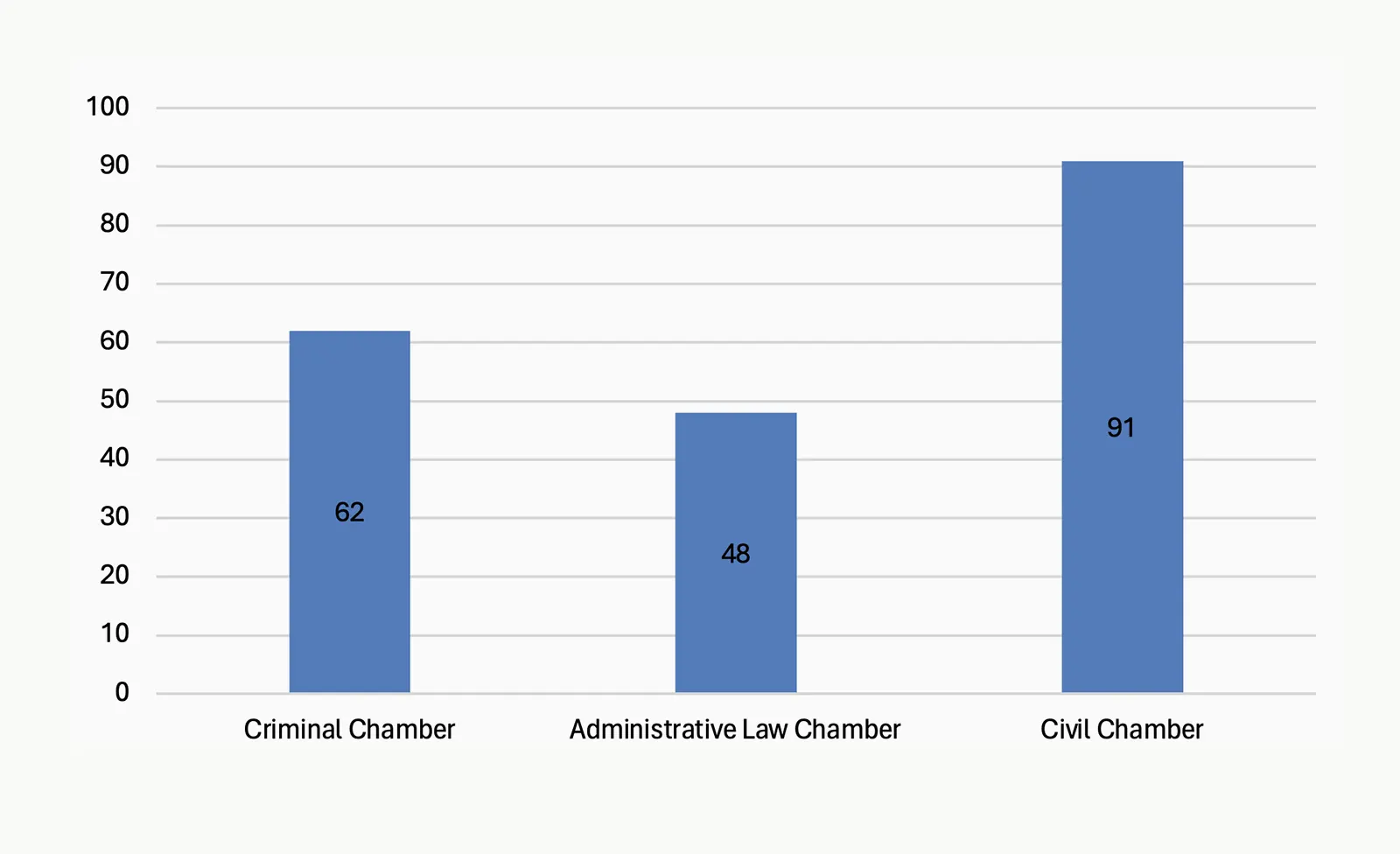
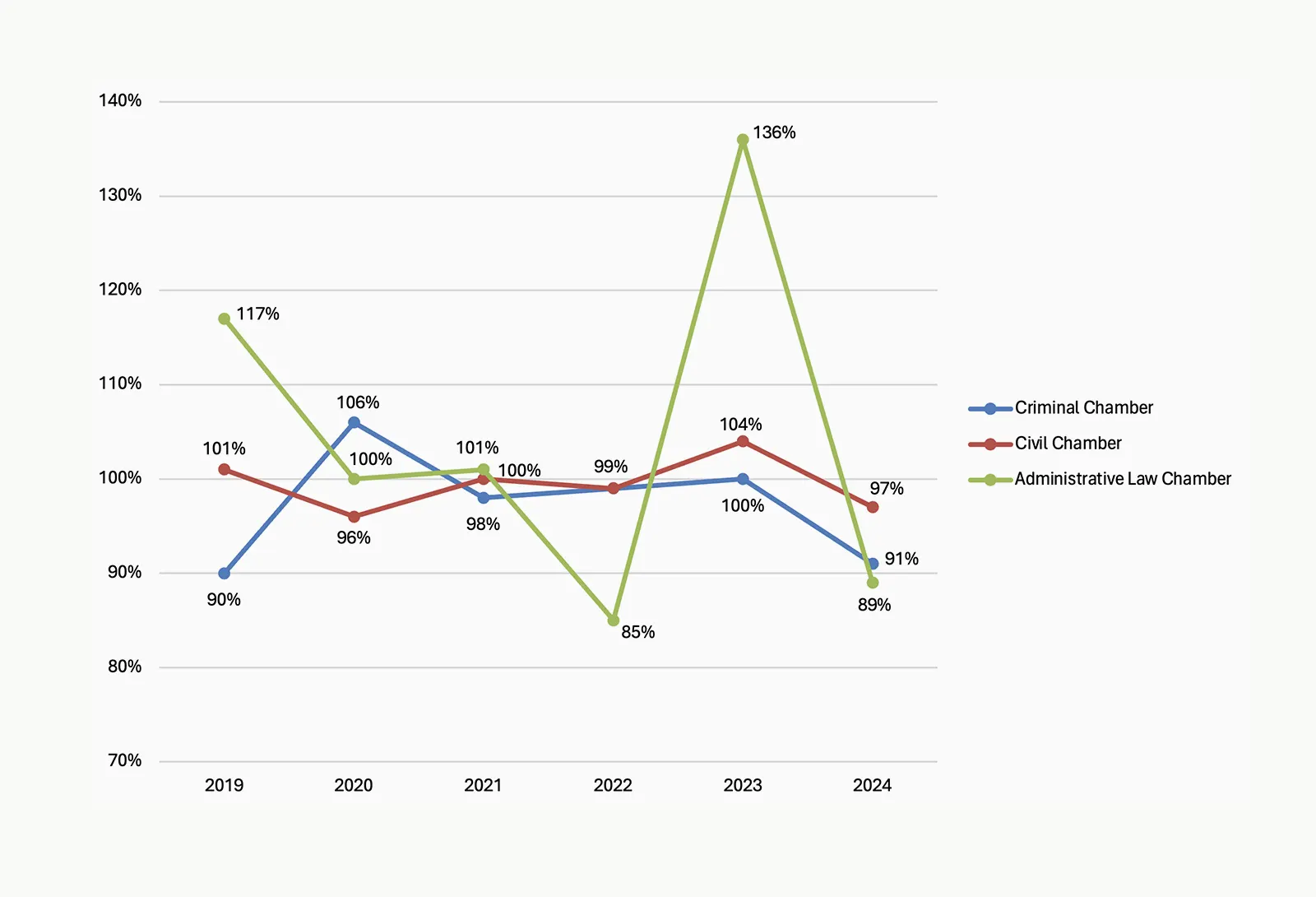
Saale Laos, Chair of the Criminal Chamber of the Supreme Court:
What caused the increase in the need to open proceedings in 2024? It was caused by the complaints filed and the legal issues raised in them, or in some cases, the significant errors found outside the complaint in the lower court’s decisions. This year, one new topic that emerged was the release of foreign prisoners from their sentences if they agree to leave Estonia or be deported. In 2024, there was a relatively higher number of cassation appeals compared to appeals against orders. Presumably, a higher proportion of cassation appeals also means greater time expenditure.
Ivo Pilving, Chairman of the Administrative Law Chamber of the Supreme Court:
The sharp increase in preliminary procedure matters (almost 45%) and the need to decide on them within a reasonable time ultimately comes at the expense of something else, if the human resources required for the work are the same. Therefore, it is understandable why we did not manage to review as many matters in principal review last year as we would have liked.
Kaupo Paal, Chairman of the Civil Chamber of the Supreme Court:
Essentially, the need to accept a civil matter for proceedings is to create clarity in the legal system and make case law more uniform and predictable. We can expect that the number of issues requiring further development and clarification will remain at a comparable level in 2025.
____________________________
[1] The data for 2024 have been taken from the Data and Analysis Environment of the Justice System (JAAK) as of 6 January 2025.
[2] More detailed data regarding the review of requests for proceedings and cases in the Supreme Court since 1993 are available on the website of the Supreme Court at https://www.riigikohus.ee/et/riigikohus/statistika (2 March 2025).
[3] The explanations of figure captions are as follows: ‘Total requests for proceedings’ – requests for proceedings received during the reporting period, to which the matters pending at the end of the previous period, i.e. requests with respect to which no order had been made at the end of the previous period, have been added; ‘requests received’ – requests for proceedings whose date of receipt was in the reporting period; ‘requests reviewed’ – requests for proceedings with an undetermined time of arrival for which an order was made during the reporting period; ‘decision to accept or not accept for proceedings’ – requests for proceedings with respect to which an order on acceptance or rejection was made during the reporting period; ‘accepted for proceedings’ – requests for proceedings with respect to which an order on acceptance was made during the reporting period.
[4] Performance – the ratio of requests reviewed during the year to the number of requests received in the same period.
[5] According to the Ministry of Justice and Digital Affairs, crime is increasing for the second consecutive year. 15.11.2024. ERR. – https://www.err.ee/1609522270/justiitsministeeriumi-andmetel-kasvab-kuritegevus-teist-aastat-jarjest) (7 February 2025).
[6] Criminal proceedings statistics. The Yearbook of the Prosecutor’s Office 2023. – https://aastaraamat.prokuratuur.ee/prokuratuuri-aastaraamat-2023/kriminaalmenetluse-statistika (2 March 2025)
[7] Performance – the ratio of matters adjudicated during the year to the number of matters received for proceedings in the same period.



